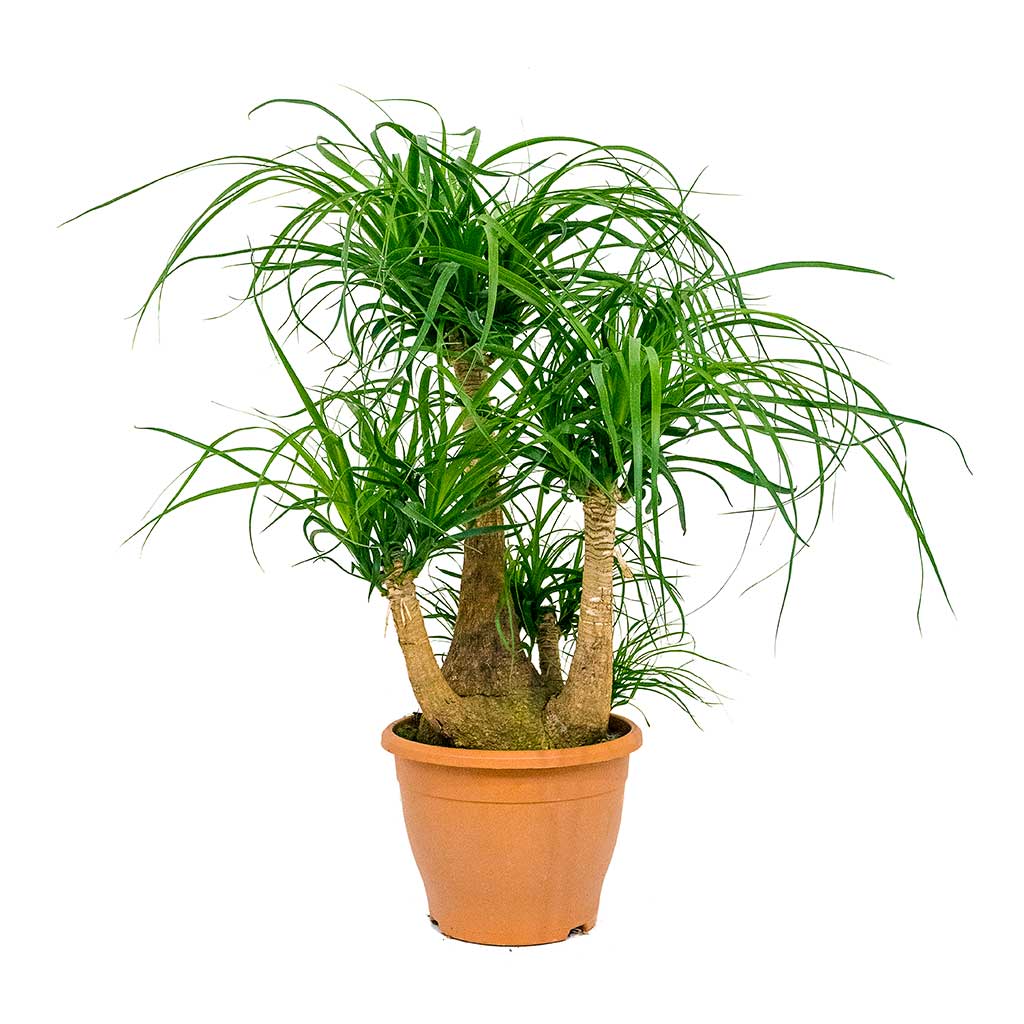Beaucarnea – Pony Tail Palm – Branched
This easy care branched version of Beaucarnea recurvata has a distinctive exotic look. Branches develop from the swollen base and trunk which stores water and looks a little like an elephant’s foot, being greyish brown with a wrinkled texture. Long slender leaves curve from the top of the stem like ponytails giving rise to its other common name Pony Tail Palm.
Beaucarnea recurvata – Branched Pony Tail Palm Care & Info Guide
Horty Hints
Too wet, pet? Yellowing leaves is a sign that the palm has been watered too much. Allow the soil to almost dry out completely in-between waterings.
Do you need a drink? These palms like storing water in the trunks, so don’t panic if there has been some neglect on your end.
Hide-and-Seek! Pony Tail Palms are susceptible to mealy bugs which hide in the pleats and folds of the plant. Cotton wool is the clue. See our pests guide for help.
Light
The Pony Tail Palm prefers bright, indirect sunlight, however will tolerate some degree of shade. However, your plant is more likely to grow in lighter conditions.
Watering
Although the base of the plant is a water store, your Pony-tail Palm will do best when watered thoroughly on a regular basis. The water store will help the plant survive if you forget occasionally!
Temperature
This Beaucarnea recurvata will thrive in cooler temperatures, therefore normal household conditions will be fine: anything from 5-25°C.
Humidity
This plant is perfect for low-humidity locations. As a desert-dweller, the Pony Tail Palm thrives in the dry air of heated homes.
Feed
Apply a light feed occasionally during the growing season.
Height & Growth Rate
Pony Tail Palms are very slow growing plants. Over time, this plant will typically reach an indoor maximum height of around 2.5 metres.
Please note: each plant is unique so available heights are approximate and the plant you receive may vary by ±10%.
Toxicity
Beaucarnea recurvata are non-toxic plants, and are safe to keep around small children and pets.
Air Purifying
Palms clean and improve air quality by filtering formaldehyde, benzene and carbon monoxide toxins from the surrounding environment.
Origin
Beaucarnea recurvata is native to Mexico and Texas, USA.

















